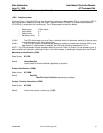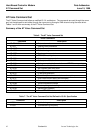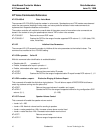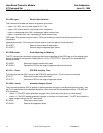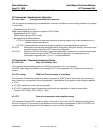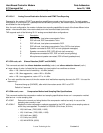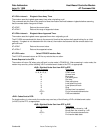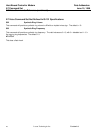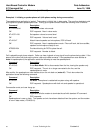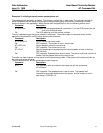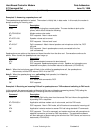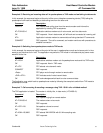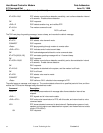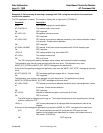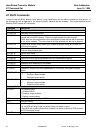
Data Addendum Host-Based Controller Modem
June 15, 1998 AT Command Set
AT Voice Commands Reference (continued)
Version 1.0 Lucent Technologies Inc.
49
Voice Modem Command Examples
The application issues AT commands to request actions by the modem, and the modem responds with standard
TIA-602 result codes to tell the application that the requested action has been completed.
Notes for Speakerphone Examples
1. If the user decides to pick up his local (parallel) phone while in the middle of a speakerphone call, the DCE will
sense the transition and send the application a <DLE>-H sequence. The applicationwhich should always be
screening for DLE-shielded codes in the background when the modem is in the voice modecan then respond
to the <DLE>-H (for example, by resetting speakerphone buttons or doing whatever else needs to be done with
the speakerphone interface).
2. DLE-shielded codes that the modem will send to the application while in speakerphone mode are:
Command Description
DLE - c FAX calling tone detect.
DLE - e Data calling tone detect.
DLE - h Local phone went on-hook (hung up).
DLE - H Local phone went off-hook (picked up).
3. When the user is in the middle of a speakerphone call, call waiting (hold operation) can be initiated when the
user hears the call-waiting signal through the speaker. Call waiting entails the following communication
between the application and the modem.
Command Description
ATD! Put the current call on hold, and answer the new incoming call.
OK DCE responds. Original call is on hold, and the speakerphone user is connected
to the second call.
To terminate the second call and return to the first, the application should again send the modem the
ATD! command.
ATD! Terminate the second call and return to the original call.
OK DCE responds. Second call is terminated and the user is again connected to the
original call.



